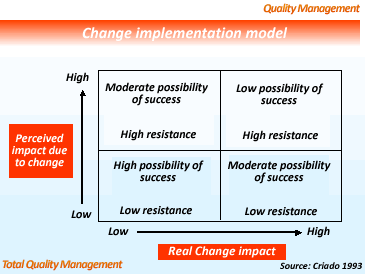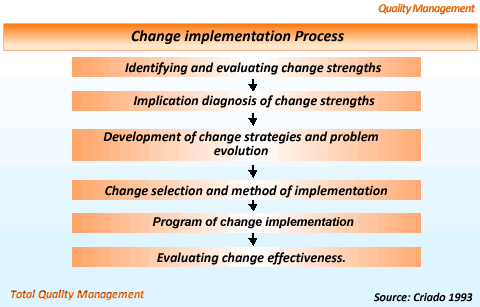Change management
Before and during the implementation of a total quality integrated system, we must be conscious that we are introducing changes into our organization: in the way workers have to relate to it, in the way for retribution, etc. Because of this and as a previous step, we must consider this change management to total quality.
To do this, we will follow James (1997) who states that quality, per se, means changing. We must define change as anything that alters the status or equilibrium of any labour situation. This includes the development of formation mechanisms in response to new technologies, changes in client requirements and management techniques.

Change Management
Changes that reach the entire organization are effective, but a great quantity of time is necessary for them to be put into practice. Furthermore, they provoke many control related problems. Reduced programs are useful, but they could be affected by an isolated change in which external relationships could be affected. Structured focuses imply that relevant people would be informed of these changes and of how these changes would affect them. This group of people would also receive information on program objectives, how they would deal with conflicts and what resources and support would be available to help individuals manage this change process effectively.

Questions involved in a successful adoption of a change program are the making of a vision, the adaptation of planning, and the constant follow-up of the change process.
Process of change implementing
Group, department, or organization culture may support or inhibit this change. Thus, managing this change effectively is a key factor in managing total quality in an organization. Besides understanding how this "hidden system" of an organization works, its internal relations can help implementing TQM using its springs.